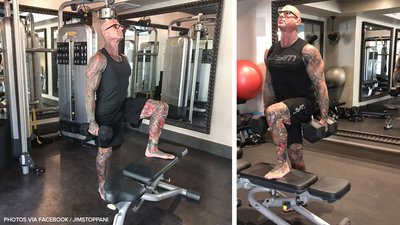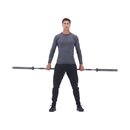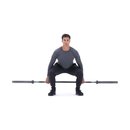Usually, when we talk about major mass-building exercises for the legs, we focus on squats, lunges and, maybe, leg presses. But there's another big lower-body compound move that doesn't get nearly as much attention as it deserves: the step-up.
Whether you do them with a barbell on your back or holding dumbbells or kettlebells, step-ups have something for everybody. Bodybuilders use them to develop hamstring and glute mass, powerlifters use them as an assistance exercise for squats, and the functional-fitness crowd, including CrossFitters, love them for their carryover into the real world.
But if they're so versatile, why don't more people do them? A lot of people don't think step-ups are challenging, but if you've ever done them, and really pushed the envelope with a heavy weight, you know they can be brutal—every bit as tough as any set of squats or lunges you'll do.
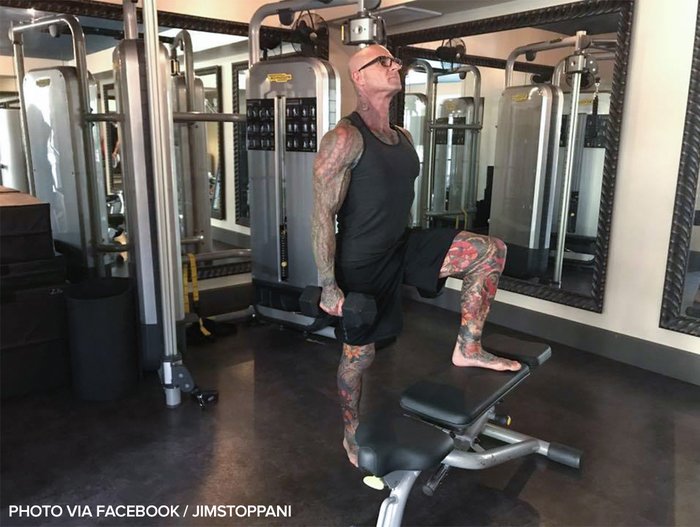
Step-ups put more emphasis on the glutes and hamstrings than the quads, so that's where we'll target this workout. The exercises I've included make this program a great complement to more quad-focused exercises like front squats and barbell hack squats.

BodyFit
$6.99/month- 2,500+ expert-created single workouts
- 3,500+ how-to exercise videos
- Detailed workout instruction
- Step-by-step workout tips
- Training at gym or at home
- Access to Workout Plans
- Access to Bodyfit App
- Store Discounts
Already have a Bodybuilding.com account with BodyFit? Sign In

What comes with BodyFit?

- Instructional Videos
Don't risk doing a workout improperly! Avoid injury and keep your form in check with in-depth instructional videos.

- How-to Images
View our enormous library of workout photos and see exactly how each exercise should be done before you give it a shot.

- Step-by-Step Instructions
Quickly read through our step-by-step directions to ensure you're doing each workout correctly the first time, every time.
Step-Up Tip 1: Use a Knee-High Bench or Box
With any major compound leg movement, work through a complete range of motion. For squats and lunges, this means going down until your thighs are at least parallel with the floor. The same is true for step ups: You want the working quad to get down to parallel.
This requires a certain height box or bench. I recommend using one that's around the height of your knee. For many people, especially taller folks, a standard weight bench will be a bit too low. If possible, use a slightly higher plyometric box.
If you only have access to a standard bench that's well short of knee height, be resourceful and find a way to raise the surface, like putting 45-pound plates underneath it. Just make sure it's a stable setup. The last thing you want when you do step-ups is a wobbly surface.

Step-Up Tip 2: Make Sure Your Entire Foot is on the Platform
The step-up isn't another name for a calf raise, so when you step up onto the bench or box, don't let your heel hang off the edge. Just like with squats and lunges, you want to press up through your heel when you do step-ups. You won't be able to do this if your heel is suspended in midair. At the very least, make sure your heel is at the front edge of the bench or box, if not further forward.
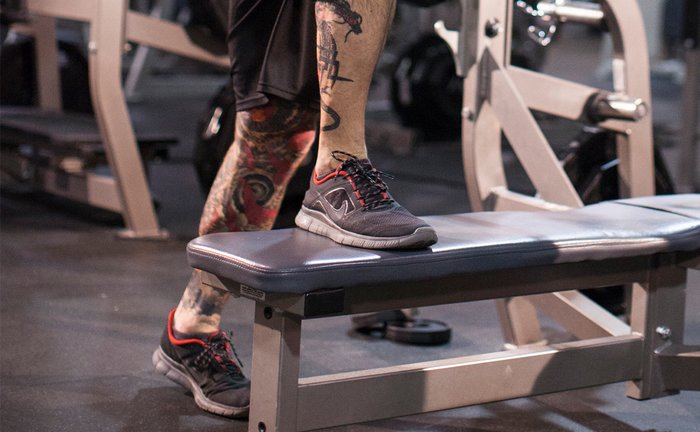
Step-Up Tip 3: Create Space Between Your Feet
When you do lunges, you take a big step forward so that your front knee doesn't extend past your foot, right? Same thing is true for step-ups. The biggest mistake I see people make when doing step-ups is having the foot that's up on the box too close to the foot that's on the ground.
Your foot position is important because you want to keep your weight back as you step up. This position forces the glutes and hamstrings of the front leg to pull with more force to lift your body up. It also takes pressure off the knee of the front leg, just like when you take a big step on lunges to make sure your knee doesn't go past your toes. Preventing undue strain on your knees should always be a high priority when you do compound leg movements, be they squats, lunges, or step-ups.
The solution is to adjust your starting position so that your down foot is further away from the bench. Just make sure that when you step back down after each rep, you're stepping down to the original foot position further back from the box or bench.
As I mentioned earlier, step-ups target the hams and glutes more than the quads. By making sure there's plenty of room between your feet, you're emphasizing these muscle groups even more.
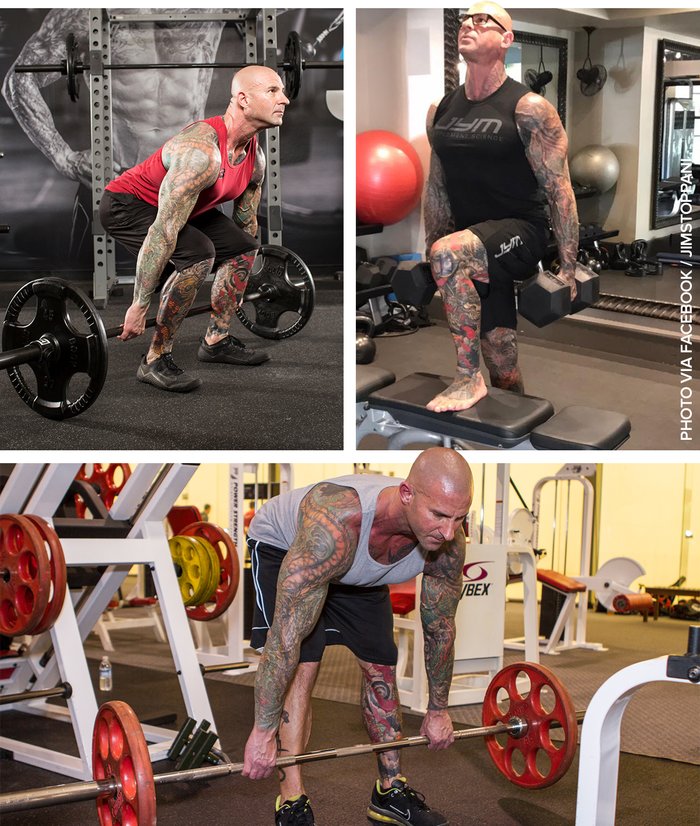
Step-Up Tip 4: Use Bands and Cables
Most people stick to only three different equipment variations on step-ups: a barbell, dumbbells, or bodyweight-only. All three of these are great, but I recommend other step-up options, too: band step-ups and cable step-ups.
The reason for using bands or cable (not both at the same time) is a simple matter of gravity. With free-weight step-ups using either dumbbells, a barbell, or bodyweight, you’re only forced to produce tension when moving up and down. However, both bands and cables provide tension not only vertically, but horizontally as well.
This changes the muscle activation of the movement, adding in some extra quad activation to what research shows is otherwise largely a hamstring-and-glute movement. Honestly, I've come to prefer the band or cable version of the movement over dumbbells.
I know what you’re thinking: "How on earth do I do step-ups with bands or cables?" Well, I've created a video to help explain exactly that.
Step-Up Tip 5: Work Diagonally
Aside from introducing new equipment into your step-up regimen via bands and cables, you can also tweak the motion by stepping diagonally up to the box or bench, with your foot stepping up to the side instead of straight up and out in front of you.
Like adding bands or cables, this variation has been shown in research to hit more of the quads. This is a great option for individuals with lagging quads. See how in this video.
Working Step-Ups into Your Leg Training
Step-ups are a great compound move, but I still recommend starting off most of your leg workouts with some form of squat or leg press.
Step-ups, in my mind, are a classic "segue" exercise, helping you make the transition between quad-and-glute exercises and pure hamstring isolation moves. If you're training quads, glutes, and hamstrings in the same workout, it makes sense to sandwich step-ups between your quad/glute exercises and your hamstring ones.
That's exactly what I did in designing this workout: barbell hack squats and leg presses done first, then step-ups, followed by Romanian deadlifts and leg curls.
Many professional bodybuilders have separate quad-focused and glute/hamstring-focused workouts. But by putting step-ups in the middle, you get a great, well-rounded leg routine that hits the quads, glutes, and hamstrings. And as an extra bonus, step-ups are a third major compound move, making this an even better workout for building both strength and size in the lower body.
Visit JimStoppani.com for more workouts, training tips, and articles on nutrition and supplementation.


